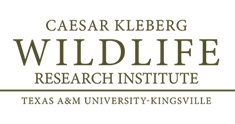In the last century, northern bobwhites have experienced widespread population declines across their range. One area that has remained stable is the South Texas Sand Sheet, aka the Wild Horse Desert. This region’s stability results from favorable range management practices, contiguous habitats, plant species diversity, and vested interest from landowners and hunters.
Bobwhite conservation is also a major driver of the rural economies of South Texas. Annual lease revenues for bobwhite hunting can yield up to $20 per acre, generate more than $75 million in income, and create over 1,600 jobs. The reason it generates so much income — bobwhite hunting in South Texas is arguably the best quail hunting in the world.
However, there are many unanswered questions related to the effects of harvest on bobwhite populations. These questions are especially concerning when considering the species is declining in other regions. Therefore, a primary concern for landowners and sportsmen is the sustainability of our management practices, including harvest.
To address these concerns, the East Foundation has implemented several long-term research projects that focus on evaluating the effects of harvest and land management practices. Our investigations occur on over 60,000 acres of East Foundation property, including the Buena Vista Ranch, Ranchito Ranch, and portions of the Santa Rosa Ranch and San Antonio Viejo Ranch. These areas function as quail laboratories addressing critical questions, such as:
- Is the 20% harvest rate recommendation for South Texas sustainable?
- What is a viable spring density (aka breeding population) for bobwhites?
- Does hunting impact bobwhite distributions and the use of available space?
- What are the dynamics of bobwhite hunts in South Texas?
- Does road baiting affect bobwhite distributions and harvest efficiency?
- How many bobwhites are unknowingly crippled during hunts?
- What are the best methods for estimating bobwhite populations, and can those be refined?
- Does grazing method and stocking rate of cattle impact bobwhite abundance and distribution?
East Foundation is committed to conducting research that makes a difference. This research will provide data on bobwhite abundance and management at an operational scale and inform future quail management.
For more information or questions about this project, contact Abe Woodard at dawoodard@eastfoundation.net.
Related Publications
From Covey Rise Upland Lifestyle Magazine - Unanswered Questions Bobwhite Harvest Research in South Texas
Full Text December 2023Abe Woodard
Exploring a Plant-Diversity Hypothesis to Explain Helminth Prevalence in Northern Bobwhite
Full Text October 2023John E. Herschberger, Shaelyn T. Rainey, Fidel Hernández, Kristyn G. Stewart, Andrea Montalvo, and Lindsey K. Howard
Management Bulletin No. 9: South Texas Bobwhites and Eyeworms: Regional History, Prevalence, and Implications for Management
Full Text August 2023Andrea B. Montalvo and D. Abraham Woodard
Management Bulletin No. 9: South Texas Bobwhites and Eyeworms: Regional History, Prevalence, and Implications for Management
Full Text August 2023Andrea B. Montalvo and D. Abraham Woodard

